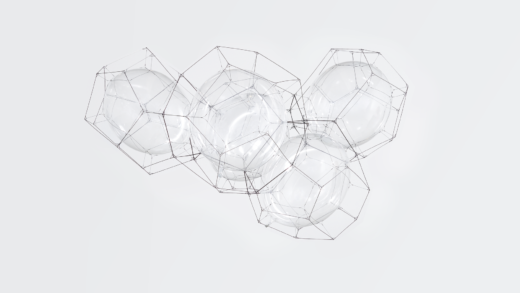Something strange happened when I walked into the press preview for Tomás Saraceno’s Stillness in Motion — Cloud Cities at SFMOMA. The gallery — previously occupied by the excellent Typeface to Interface exhibition — is jarringly remade as a wide-open NASA-like clean room, including a white floor that will doubtless drive the museum staff responsible for the exhibit’s maintenance crazy.
The strange thing that happened to me when I walked into the show’s press preview was feeling a feeling I hadn’t felt in a while. It was unfamiliar. It was optimism.
Berlin-based Saraceno is both a visual artist and an architect, so it’s fitting that Stillness in Motion is both an exhibition and a proposal for future building projects. As we fret about dwindling supplies of natural resources, the unequal distribution of those resources, and the seemingly impossible task of slowing the man-made destruction of our only planet, Saraceno daringly places a stake in a utopian vision of the future. After the Anthropocene, he proposes, we can have an Aerocene.
The radical approach in Saraceno’s vision isn’t the idea of floating cities, but the idea of floating cities powered by the sun and the wind, not battery cells or solar panels or wind turbines or fossil fuels. While Stillness in Motion looks decidedly futuristic (a word that connotes impossibly clean lines and shiny surfaces), its visual language is rooted in nature: the architecture of spider webs, floating seed pods and bubbles.
Saraceno’s installation at SFMOMA is a network of thick and taut nylon cables, polished stainless steel plates, over 15,000 hand-tied knots and gently bobbing inflatables. Alongside the network of cables are examples of Saraceno’s research material: spider webs constructed in collaboration and in approximations of zero gravity, balloon tests against the scenic background of White Sands, New Mexico.



